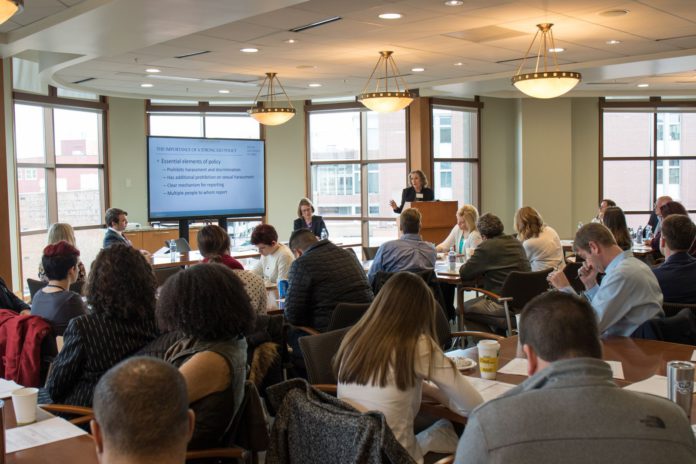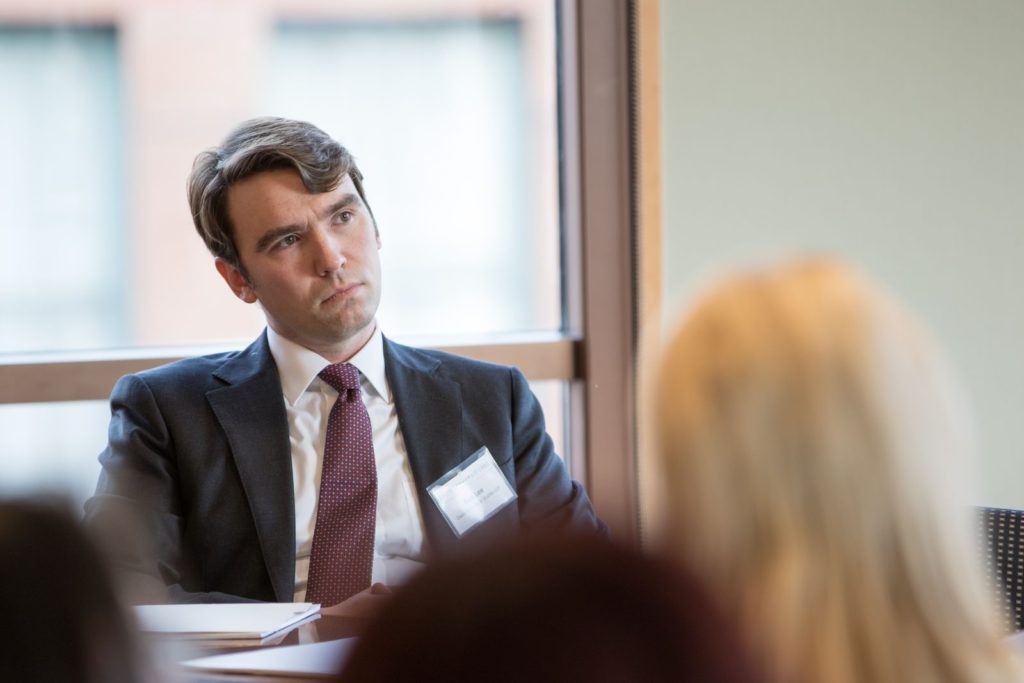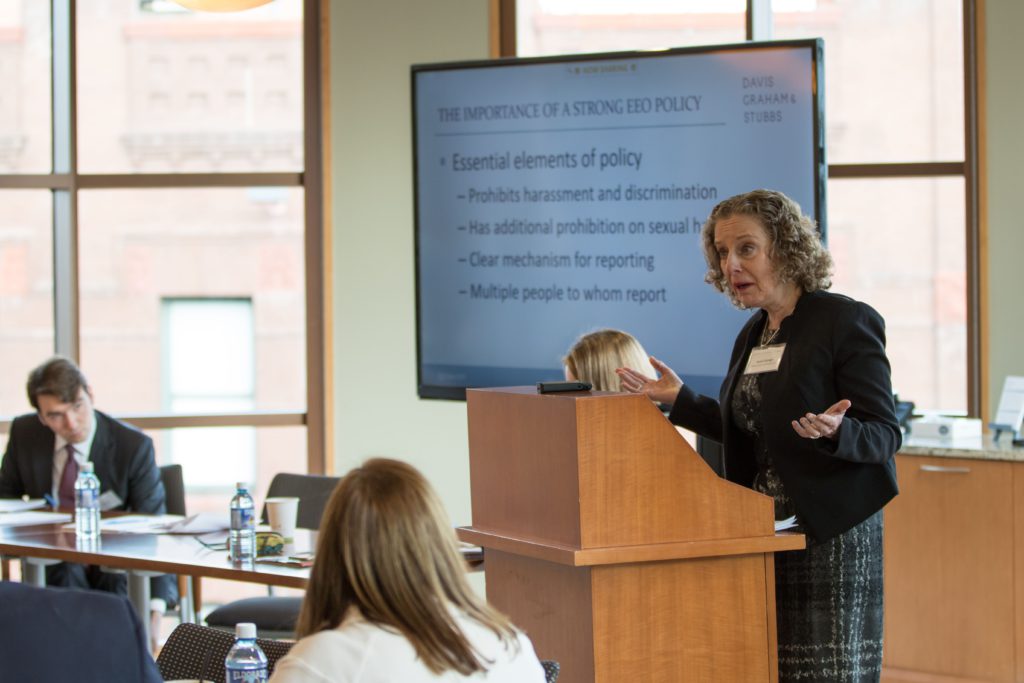

According to a 2016 report from the Equal Employment Opportunity Commission, 75 percent of people who experience harassment in the workplace don’t report to a manager or supervisor. And in 2017, 48.8 percent of charges by the EEOC were for retaliation against an employee bringing allegations.
But in the wake of the #MeToo and Time’s Up movements, employers need to double down on making sure they have clear, effective anti-harassment policies and investigations, according to experts at a recent roundtable discussion. Attorneys at Davis Graham & Stubbs gave a presentation Thursday to remind employers of topics such as the importance of clear communications, that the failure to investigate claims can be just as damning as harassment itself, and effective training includes encouraging bystander intervention, too.
“Why do we have this #MeToo movement of all these people coming out of the woodwork to say this has happened to me?” said partner Sybil Kisken. “There are studies and articles and all sorts of material about it. People are afraid of retaliation.”
Three federal laws prohibit discrimination, harassment and retaliation in the workplace: The Civil Rights Act of 1964, the Age Discrimination Act of 1967 and the Americans with Disabilities Act of 1990. The laws apply to companies with at least 15 or 20 employees. But Colorado’s Anti-Discrimination Act applies to any size employer and prohibits discrimination on the basis of race, color, creed, religion, national origin, ancestry, sex, pregnancy, age, sexual orientation, disability or marriage to a co-worker.
The U.S. Supreme Court first recognized harassment as illegal discrimination in the 1986 decision Meritor Savings Bank v. Vinson, though the EEOC issued guidelines in 1980 about quid pro quo relationships and hostile work environments.

Kisken said the EEOC’s 2016 report found that much of harassment training is ineffective, often done indirectly through videos. Employers should incorporate bystander training, she added, to mitigate the high percentage of victims who don’t report their experiences of harassment. Schools often incorporate training to encourage bystander intervention.
“That is empowering and training your employees that if they see someone engaging in inappropriate behavior, to do something about it,” Kisken said. Bystander intervention can include either directly speaking up to employees who act inappropriately, she added, or reporting the behavior to human resources.
Kisken emphasized the need to follow up on the promise to investigate because of the legal liability employers expose themselves to for failing to properly investigate claims.
“Not only having your policy clearly say that retaliation is prohibited, but reinforcing that when you meet with an employee [is important],” she said. “‘I want to tell you I’m going to look into your complaint, I’m going to be as discreet as I can, and the company will not retaliate.’”
Davis Graham & Stubbs associate Rick Lee spoke about a number of harassment cases, some high-profile and others less so, in which employers didn’t properly address harassment allegations, which exacerbated the repercussions they faced.
In Carlson v. Ailes, for example, former Fox News host Gretchen Carlson alleged sexual harassment by Roger Ailes, the nework’s former chairman and CEO. Carlson also claimed her firing from the nework was an act of retaliation. The lawsuit eventually settled for $20 million.
“The point that they drive home consistently throughout the complaint is the failure of Fox, allegedly, to follow up on the complaints of both Carlson and other employees before her,” Lee said.
Firm partner Janet Savage explained employers can also end up in deep water in cases where they were not clear that an employee’s complaint was alleging harassment. Employers should always make sure to ask if that is the nature of the complaint.
“I don’t think you need to wait for the magic words to do a complaint,” Savage said. “And that’s important, because things keep evolving.” In outlining the elements of good anti-harassment policies, she recommended employers have separate policies for sexual harassment and other types of harassment, because general umbrella policies may not cover everything that could be considered sexual harassment.
Tying the presentation back into the #MeToo movement, Savage said employers should do their best to investigate allegations of harassment that purportedly happened in the past.


“People may have left, memories may have faded, but I still think you should investigate,” she said. “Even if it’s not within the period of time that can be actually subject to a charge, I still think investigate it.”
Kisken also touched on evolving definitions of harassment to tie the presentation back to the social movement. In October, Monica Lewinsky tweeted #MeToo. Although Lewinsky did not elaborate further, Kisken said her tweet might suggest she now considers her affair with former President Bill Clinton sexual harassment, even if she did not at the time.
“We’ve had lots of historical moments,” Kisken said. “Fast forward to October 2017. I’ve never seen anything that’s touched my career like what happened in October 2017.”
—Julia Cardi

